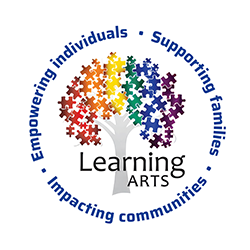
Exploring ABA Therapy
What is Applied Behavior Analysis?
Applied Behavior Analysis (ABA) is about the science of behavior and learning. ABA endeavors to explain how behavior works, how our environment affects behavior, and how the learning process happens.
What is ABA Therapy?
What is ABA intervention?
ABA intervention refers to the process of applying behavior analysis. This process involves an ABA therapist observing their patients to learn about their unique strengths, challenges, and interests. Then, working with the patient, their family, and our ABA team, the therapist will set goals for the therapy – like improving communication skills, making new friends, or feeling more comfortable in different situations.
Next, the therapist breaks the goals into smaller, achievable steps. This is a critical aspect of ABA because as individuals master each step, they build confidence along the way. If they are learning to communicate, for instance, the ABA therapist might start by helping them say simple words, and as the patient becomes more comfortable, they’ll gradually learn to express themselves in more complex ways.
Additionally, Learning ARTS has created its own stimulus application to support ABA interventions. Our stimulus app facilitates functional communication training through introductions to language (tacts and mands), conversational skills, daily schedules, icon exchange systems, and token economies.
Types of ABA Therapy
There are numerous ABA Therapy models (or types of ABA), including Discrete Trial Training (DTT), Early Intensive Behavioral Intervention (EIBI), Early Start Denver Model (ESDM), Natural Environment Training, Comprehensive ABA Therapy, and Focused ABA Therapy. Generally, the model selected will depend on a child’s age, challenges, strengths, and other factors.
At Learning ARTS, the models we most frequently use are Comprehensive and Focused ABA Treatment. What these models have in common is they are one-to-one therapies that can be administered in a range of settings, including in-clinic, in-home, community-based, or via telehealth.

Early Intensive or Comprehensive
ABA Treatment
While not always, Early Intensive or Comprehensive ABA is generally most appropriate for children younger than five years of age. These interventions involve a highly individualized curriculum teaching communication, social interaction, and functional and adaptive skills. These programs consist of 30-40 hours per week of direct ABA intervention, plus time allocated for supervision, management, and caregiver training. These hours do not include school or other services that may be provided – hence the term Intensive.
At Learning ARTS, our Comprehensive Programs are supervised by a Board Certified Behavior Analyst (BCBA) or a Board Certified Behavior Analyst – Doctorate (BCBA-D). Individual programs are supervised by Program Managers and Behavior Specialists, and the direct work is done by a Registered Behavior Technician (RBT) or Board Certified Autism Technician (BCAT).

Focused Treatment
For school-aged children, we typically use the Focused Treatment model of ABA Therapy. Focused Treatment, as the name implies, focuses on specific skill development (such as communication) or behavior reduction (such as adaptive skills), all in service of achieving greater independence. Focused Treatment is generally 10-25 hours per week but may be more than 25 hours if behaviors are extreme or require additional consideration.
A Board Certified Behavior Analyst (BCBA) or a Board Certified Behavior Analyst – Doctorate (BCBA-D) will develop and supervise the Focused Treatment plan, Behavior Specialists will supervise the patient programs, and a Registered Behavior Technician (RBT) or Board Certified Autism Technician (BCAT) will implement the treatment directly.


Parent
ABA Treatment
There are numerous studies that highlight the importance of parent training in ABA, and we can’t emphasize it enough. When parents are actively involved in the administration of ABA Therapy, it has a dramatic impact on a child’s ability to unlock their full potential. Typically, patients whose parents spend 2-4 hours a month in Parent ABA Training and also take advantage of our Care Coordination Services are the ones who graduate most quickly.